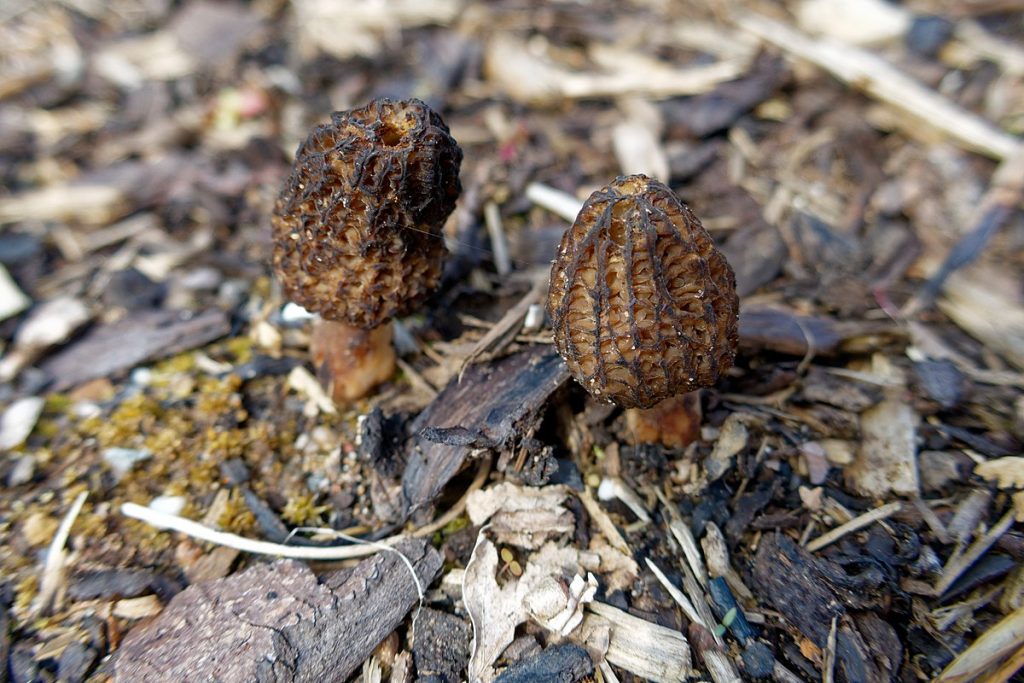Morchella elata has a very interesting taxonomic history. It belongs to the clade, or a genetic subgroup, of black morels called Elata. The Elata clade is characterized by mushrooms that gradually darken their ridges upon maturity, and previously all such mushrooms were called Morchella elata because macroscopically they all look quite similar. However, with the advance of genetic analysis, recent studies have shown that there are dozen species just in the clade of black morels, and Morchella elata is only found in Europe and is distinct from its North American cousins. [i]
This species was first described by the Swedish mycologist Elias Magnus Fries in 1822, who gave it the name Morchella elata, meaning elongated (Latin: elata) mushroom (Germanic: Morchella).

My name is Austin Collins.
I've dedicated my life to Mushrooms.
I believe Mushrooms are the best kept secret when it comes to health and well being.
For that reason, I would like to share a company with you that in my opinion makes the best mushroom products on the market.
The company is called Noomadic Herbals, my favorite supplement they make is called "Mushroom Total".
I take their products every day and they have helped me think better and have more energy. Give them a try.
-Austin
Identification and Description [ii]
Unfortunately, the black morels, including M. elata, are highly polymorphic in their appearance, often with great variations in shape, color, and size. This makes their accurate identification quite difficult.
Cap: The cap of this species is 3 to 8 cm tall and 2 to 6 cm wide. In shape, the cap resembles a conical or egg-shaped honeycomb with deep pits arranged along parallel vertical edges. The well-aligned vertical ridges are crossed by narrowed ad more randomly spaced horizontal ridges. The ridges tend to darken(black) with age, while the inner surface of the pits also darkens with age they remain lighter in comparison, often a dark olive-brown or dark brown.
Flesh: Thin and white on the inside
Stem: The stem of M. elata is 1 to 10cm tall and 1 to3 cm in diameter. The stem has a singular hollow, wrinkled chamber. Externally, the top of the stem is smooth while near the base it is vertically grooved.
Spore: The spores of this species are ellipsoidal and smooth. They measure approximately 18-25 by 11-15 micrometers.
Spore Print: The spore print of this species is pale cream to pale-tawny.
Flavor and Edibility: Black morels are some of the most delectable mushrooms, albeit somewhat less flavorful than their yellow morel cousin. These mushrooms are edible but only when adequately cooked, raw black morel mushrooms should never be consumed because they contain a chemical that can cause gastrointestinal upset and allergic reaction in susceptible individuals.
Smell: M. elata has a pleasant, slightly meaty smell.
Habitat: These black morels can be found growing solitary, scattered, clustered, or occasionally gregariously in large numbers in burned campfire sites, wood-chip beds in gardens, or on disturbed grounds. Sometimes they have been known to appear in rich, well-drained soil under apple trees or in coniferous woods.
Range: The species of Morchella elata is endemic to Europe. They are frequently found across the United Kingdom and Ireland during the months of March, April, and May.
Look-A-likes [iii]
The greatest difficulty for mycophiles usually arises when trying to differentiate between Morchella elata and other black and yellow morels, which unfortunately have similar color patters. The easiest methods with which to tell these species apart is to take a close look at their caps, and thanks to new studies their geographic distributions. For example, Morchella esculenta has a player pitted cap and is less conical. Other closely resembling species include Morchella semilibera and Verpa bohemica.
The toxic false morels, Gyromitra caroliniana, and Gyromitra brunnea are unfortunately another set of mushrooms that look similar to Morchella elata. Thankfully, taking a close look at the cap and stem of these species can also be very helpful for allowing their differentiation. Gyromitra species of false morels have a more reddish saddle-shaped cap, that attaches only to the top of the stalk, and in comparison to M. elata has less defined corrugations. Additionally, like the hollow stalk of M. elata, the poisonous false morels have a stalk that is dense.
Toxicity, Safety & Side Effects [iv]
Morchella elata is completely safe to consume, however only when cooked. Fresh specimens contain as-yet unidentified toxins which can cause gastrointestinal upset as well as allergic reactions in hypersensitive individuals. Furthermore, the reported gastrointestinal upset is especially worse if consumed along with alcohol.
[i] Kuo, M. (2012, November). The Morchellaceae: True morels and verpas.
[ii] First Nature. (n.d.). Morchella elata Fr. – Black Morel.
[iii] WildFoodsUK. (2019, November 29). Black Morel. Wild Food UK
[iv] Wood, M. (2010). California Fungi: Morchella elata



My name is Austin Collins.
I've dedicated my life to Mushrooms.
I believe Mushrooms are the best kept secret when it comes to health and well being.
For that reason, I would like to share a company with you that in my opinion makes the best mushroom products on the market.
The company is called Noomadic Herbals, my favorite supplement they make is called "Mushroom Total".
I take their products every day and they have helped me think better and have more energy. Give them a try.
-Austin



